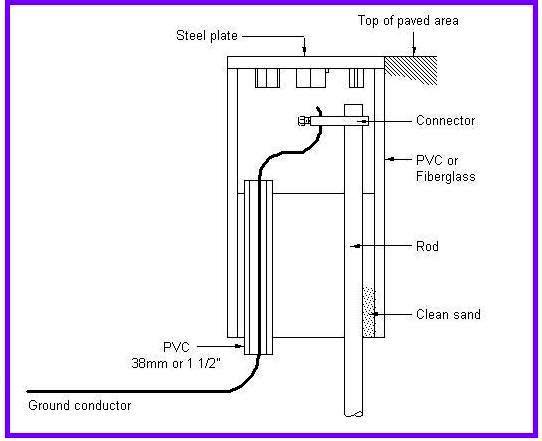In Article " How to Calculate Ground Resistance ", I explained the following points:
- How to Measure Ground Resistance,
- How to Estimate Minimum Ground Grid Resistance,
- How to Estimate Upper Limit of Ground Resistance.
Today, I will explain Practice#2: How to Determine Ground Resistance and Practice#3: How To Verify Ground Rod Installation as follows.
You can review the following Articles For more information:
- Verifying Ground Rod Installation
- Verifying Ground Connection and Fence Ground Installation
- Identifying Correct Grounding Tools and Equipment
- Identifying Grounding Connectors and Bushings
| Follow the steps in this work aid to determine if the materials and connections used for the ground grid are correct as follows:
Note: Numbers 4, 5, and 6 can only be accurately performed before or during installation of the grid, or at excavation. A post-installation verification can only be made from previous layout drawings and notes. |
| Exercise for Verifying Ground Grid Installation Question#1: What is the minimum size conductor to be used for a ground grid? Answer: 2/0 AWG or 70 mm2 copper wire Question#2: What type of connections should be made for the ground grid itself? Answer: Thermite welded, brazed, or compression connected Question#3: If the soil resistance is 65 Ω/m, what requirements should be met for the ground grid? Answer: The wires should be tinned. Question#4: Where should a substation ground grid be located? Answer: At the largest concentration of kVA, extending beyond the substation switch yard Question#5: What is the minimum depth a ground grid should be buried? Answer: 18 inches (0.5 m) |
| Practice#3: How To Verify Ground Rod Installation |
| Follow the steps in this work aid to verify correct ground electrode (rod) placement and use as follows:
|
| Exercise for Verifying Ground Rod Installation Question#1: What are the minimum rod size requirements? Answer: 5/8 inch (16 mm) in diameter and 8 feet (2.4 m) minimum in length. Question#2: If the soil resistance is less than 70 Ω/m, what rod requirements should be met? Answer: the ground Rods must be stainless steel. Question#3: What are the procedures for measuring the resistance of a single rod? Answer: The method to measure individual rod or small grids resistance is similar to measuring system Resistance ground, with these differences:
|
In the next article, I will explain Other Practices for Inspection of ground Grids, Rods, and Fence grounds. Please, keep following



No comments:
Post a Comment